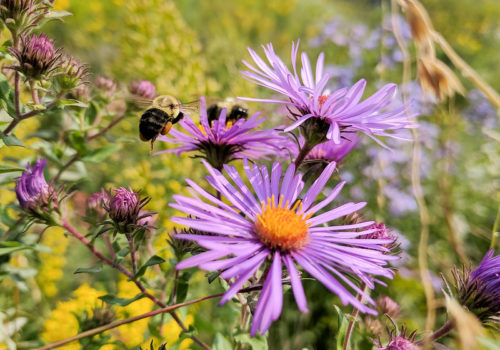News / February 28, 2018
Rebuilding Hall’s Island to improve habitat and ecology along the Mississippi River

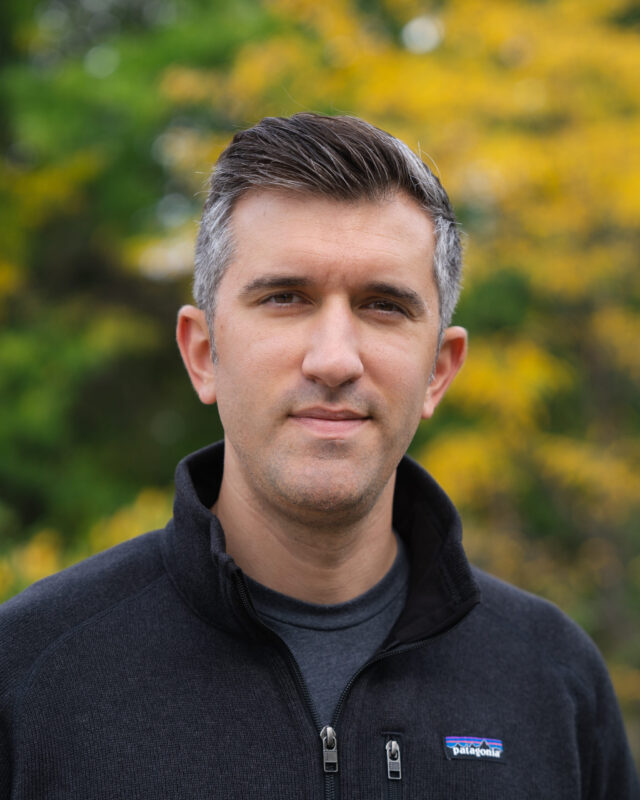
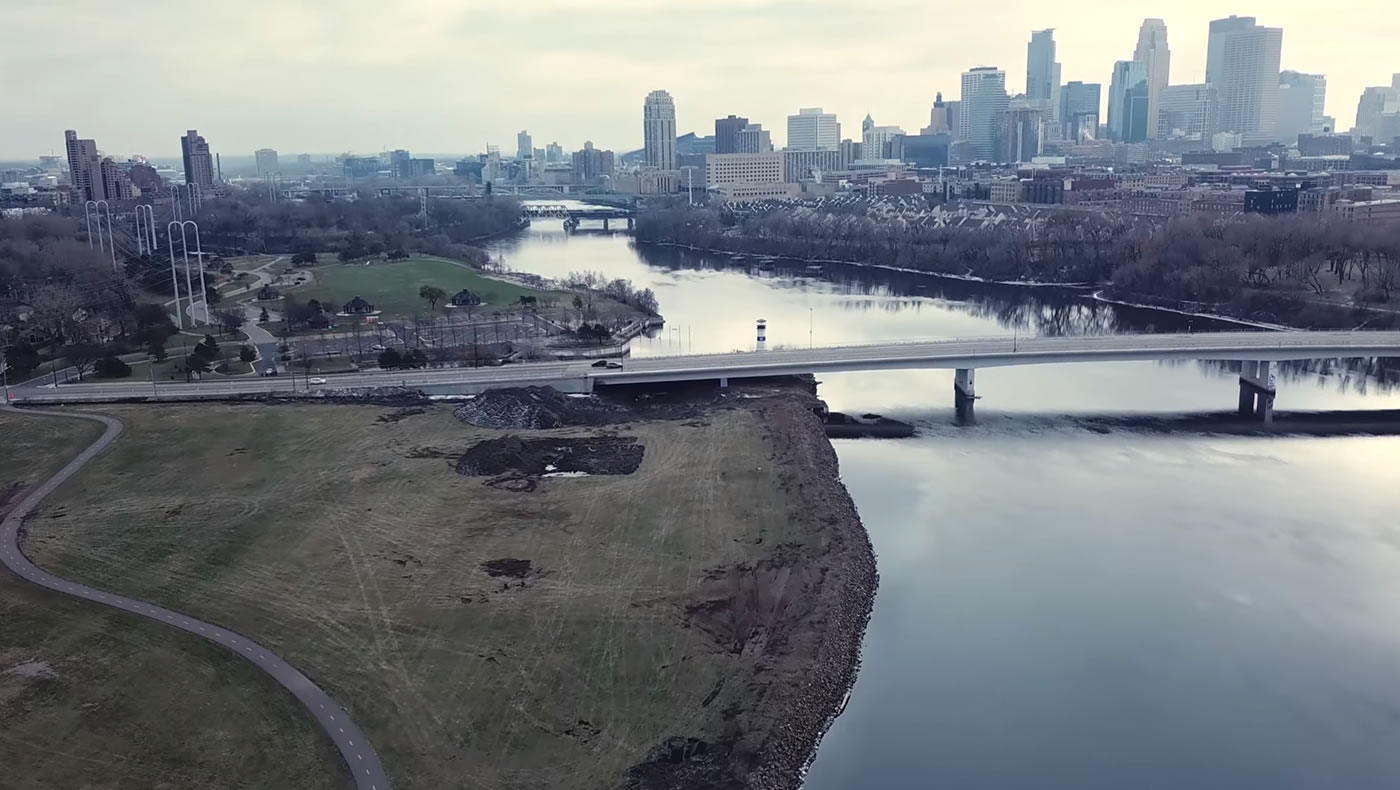
It’s not every day you get to watch an island being built in the middle of a city. But that’s what we did over the winter here at the MWMO.
Over the last four months, a small army of workers wielding heavy equipment braved the snow and bitter cold to resurrect Hall’s Island. This unique piece of Minneapolis’ natural history vanished in the 1960s, when a lumber company bought the island, filled in the channel and paved over the entire site for industrial use.
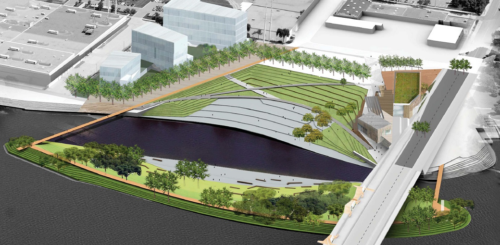
Undoing a half-century of industrialization was no small task. Crews excavated more than 32,000 tons of soil (much of it contaminated with old construction debris) and brought in nearly 31,000 tons of clean sand to rebuild the channel and establish the new shoreline. At the height of the operation, materials moved in and out of the site at a rate of 120 truckloads per day. (Watch a time-lapse video.)
The goal of this massive undertaking (and the MWMO’s involvement in it) may be surprising to some. Although technically part of the city’s park system, Hall’s Island will not be a park amenity in the traditional sense. Instead, its main purpose will be to provide habitat for a variety of wildlife — birds, turtles, mussels, fish, aquatic mammals, pollinators and others.
Although somewhat rare for the MWMO, this type of project represents a central part of our mission. Most people know us from our work protecting water quality in the Mississippi River, but supporting ecology and habitat are also critical part of what we do. In fact, “diverse and functional ecosystems” are a top focus for the MWMO, as expressed in our mission statement.
On water quality projects, we might achieve our habitat goals in other ways. For example, we might advocate for above-ground stormwater management practices that use native plants, which attract and provide habitat for pollinators. Or, we might work with a landowner to restore a piece of shoreline using bioengineering techniques, which use vegetation to stabilize the river bank.
Hall’s Island is a more direct type of habitat project. The MWMO provided a $1.5 million grant to the Minneapolis Park & Recreation Board, which is leading the reconstruction with support from its philanthropic partner, the Minneapolis Parks Foundation. The restored island is designed specifically to be a haven for wildlife. It will feature a diverse array of habitat, including floodplain forest, various types of prairie, and a sandy beach safe (mostly) from human interference. Rock ledges, basking logs, native plants and trees will provide a welcoming refuge for a variety of animals.
It’s the type of landscape that existed here a long time ago, and that we hope to now recreate in strategic locations.
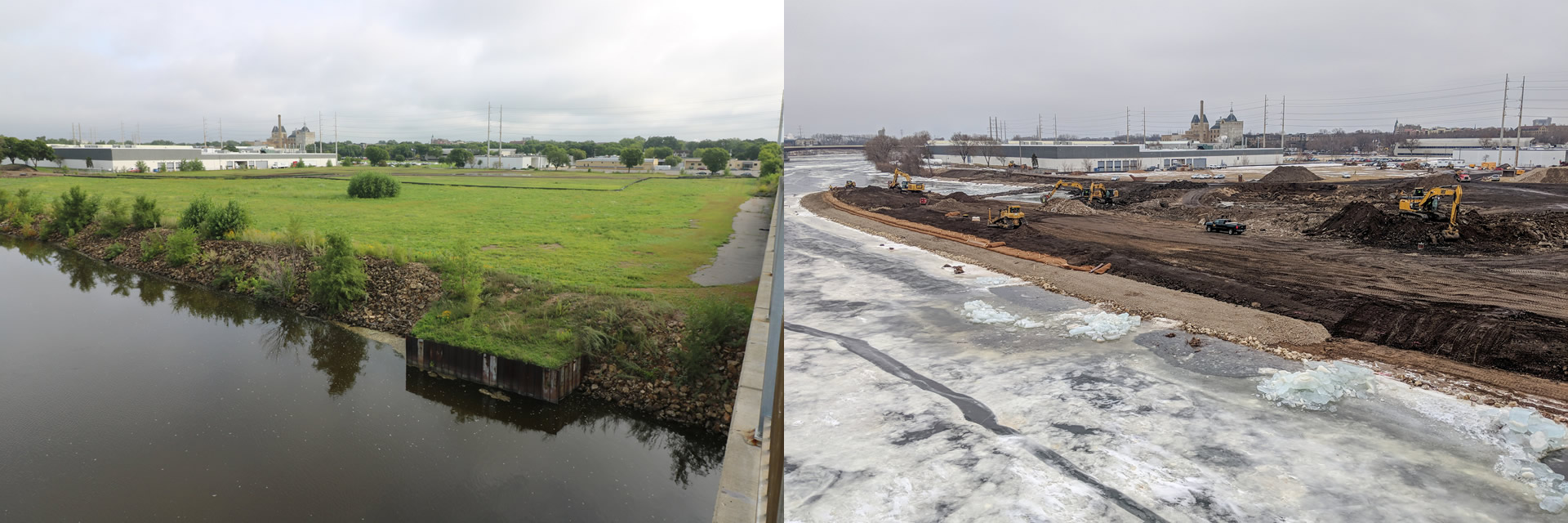
The MWMO’s goals and the Mississippi River
Historically, the Mississippi River corridor has provided the MWMO’s best opportunity to advance our goals in the areas of habitat and ecological restoration. This corridor, far-and-away, contains the majority of the MWMO’s pre-existing natural areas with features like wetlands and springs. The MWMO used to be filled with these types of features, but urbanization has done away with them. The few that remain are areas that we’d like to protect.
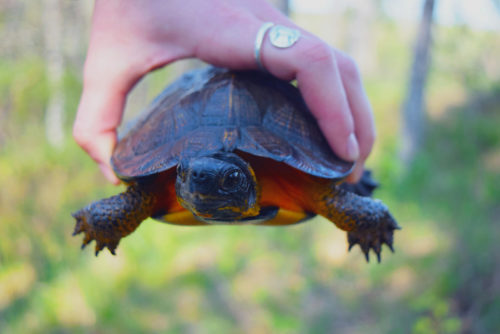
It’s easy to forget as we go about our lives in a densely populated metro area, but the river is home to a vast array of wildlife. From our office on the Minneapolis riverfront, we can see it every day. Hawks and eagles soar overhead, occasionally perching themselves above our parking lot. Mallards and Canada Geese intermingle along our shoreline, while a quarter-mile upstream dozens of great blue herons tend to their nests at the rookery. Our rain garden attracts armies of bees and butterflies in late summer, while rabbits, beavers and even the occasional fox wander through the backyard throughout the year.
It’s not just local wildlife who depend on the Mississippi River. Our stretch of the river is part of the larger Mississippi Flyway. Every spring and fall, birds use the Mississippi River as a corridor to move across our country as they migrate between their northern and southern homes. And while there is some amount of habitat along our stretch of the river, it’s fragmented and often degraded in quality.
In addition to birds, the River corridor provides important habitat for other animals — species that reside in the water, as well as along the river’s edge. Improving the quality and diversity of the vegetation and habitat for these critters is a focus of our projects. A local coyote was the benefactor of one such effort at our Stevenson Ravine project. On Hall’s Island, we’re also targeting habitat for mussels, reptiles, amphibians and fish.
Of course, with these bank restoration projects, not only do we improve the habitat, but we’re also helping to improve water quality. Eroding banks contribute sediment and pollutants to the Mississippi River, which degrades the water’s quality and impacts aquatic organisms. Stabilizing the banks reduces this erosion. By including upland vegetation with the bank restoration, we also create a buffer strips, which capture and treat surface water runoff before it flows into the river.
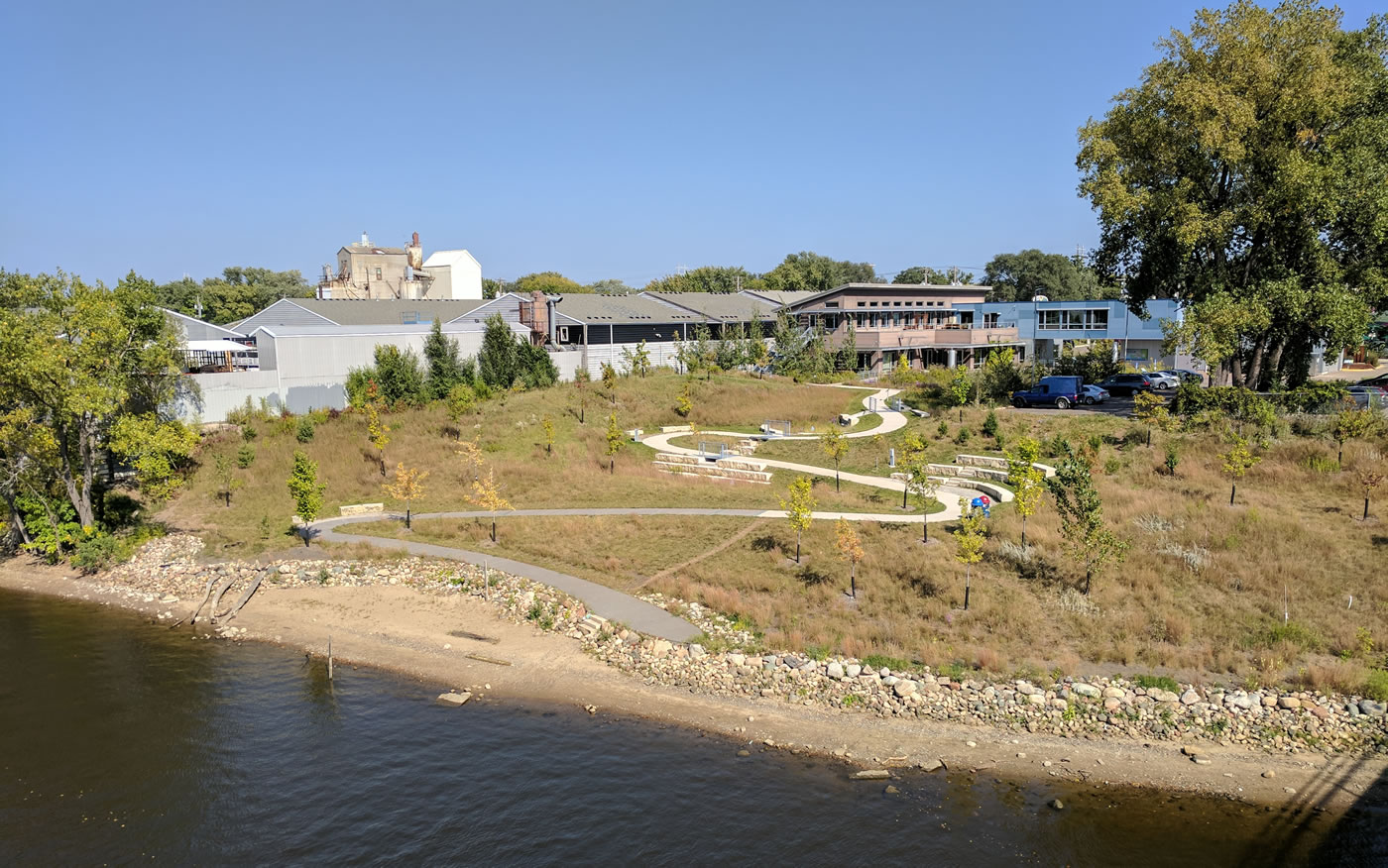
RiverFirst: Reclaiming the riverfront for people and nature
The environmental degradation that once occurred at Hall’s Island is a common story along our portion of the Mississippi River. Decades of industrial development have destroyed or negatively impacted much of the natural shoreline and habitat along the river banks in North and Northeast Minneapolis. It’s exciting to see this area begin to be transformed.
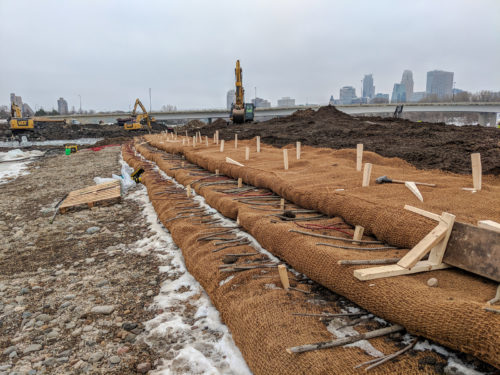
In fact, Hall’s Island is only one part of a larger vision to transform the riverfront. The Minneapolis Park & Recreation Board and the Minneapolis Parks Foundation are spearheading the RiverFirst initiative, which seeks to reclaim the industrialized land along the river north of St. Anthony Falls and create a connected system of world-class parks and green space. In addition to Hall’s Island, the MWMO is involved in several other RiverFirst projects, including WaterWorks and the future Upper Harbor Terminal redevelopment.
As of this week, Hall’s Island is officially an island again. The construction crew removed the final land bridge on February 21. The island will now sit largely untouched (by humans, at least) until the spring, when landscapers from Wetland Habitat Restorations (now Landbridge Ecological) will plant a variety of trees and native plants on the island, thus completing its transformation.
Eventually, Hall’s Island will be open to human visitors. A pedestrian walkway is planned that will connect the island to the Northeast Minneapolis mainland, where a future park is proposed at the former Scherer Brothers Lumber site. For the time being, however, the island will be kept off limits to visitors so that the new vegetation has time to establish itself — along with, hopefully, mussels, birds, turtles and a variety of river wildlife.
It will take some time for nature to reclaim the island. We’ll be watching carefully and will keep you updated, as there are sure to be many surprises along the way.
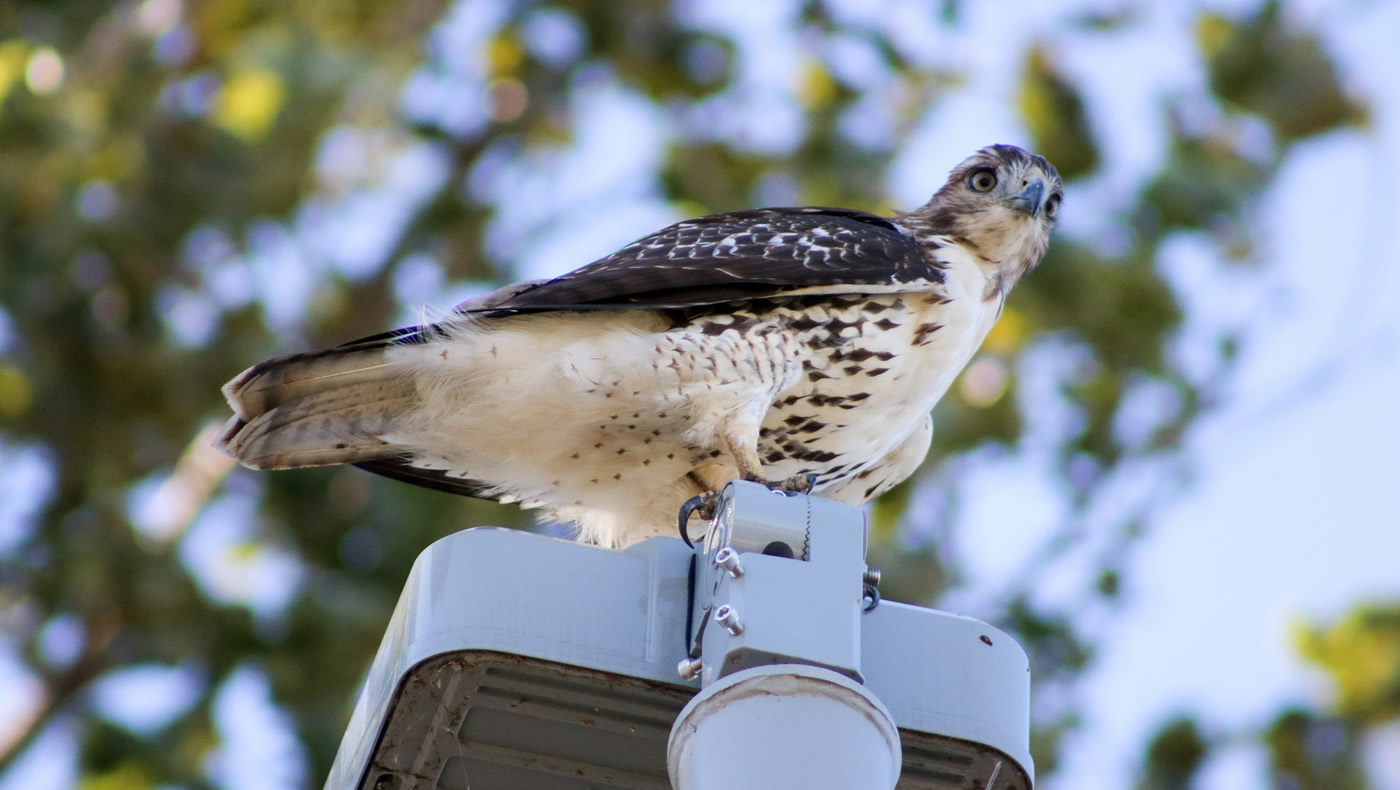
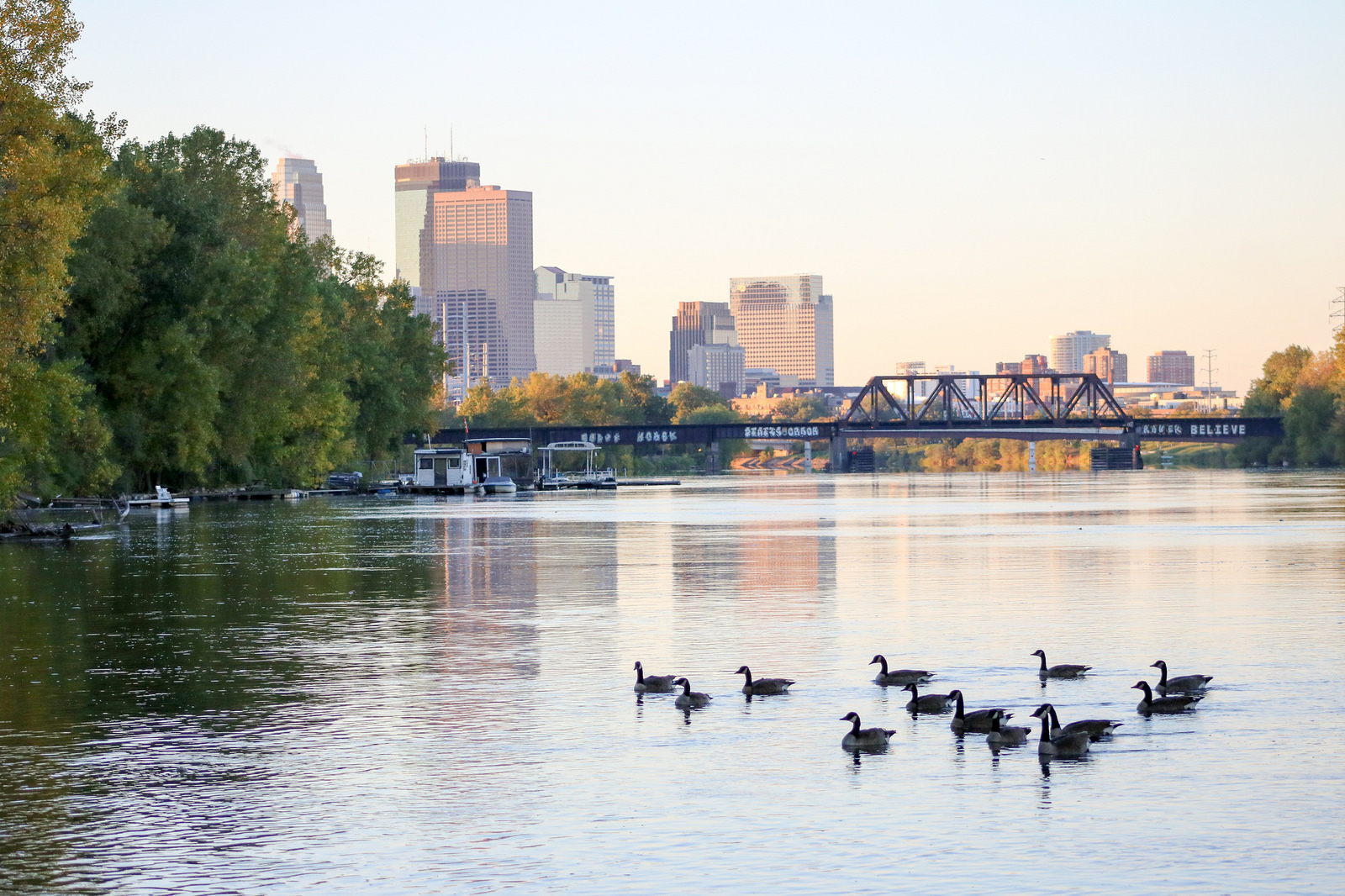
Above: A beaver swims along the downtown Minneapolis riverfront.


